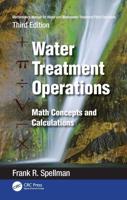Publisher's Synopsis
An aerosol is a colloidal system of solid or liquid particles in a gas. An aerosol includes both the particles and the suspending gas, which is usually air. Examples of natural aerosols are fog, forest exudates and geyser steam. Examples of artificial aerosols are haze, dust, particulate air pollutants and smoke. Atmospheric aerosols are solid or liquid particles or both suspended in air with diameters between about 0.002 ?m to about 100 ?m. Aerosol particles vary greatly in size, source, chemical composition, amount and distribution in space and time, and how long they survive in the atmosphere. Primary atmospheric aerosols are particulates that emitted directly into the atmosphere (for instance, sea-salt, mineral aerosols (or dust), volcanic dust, smoke and soot, some organics). Secondary atmospheric aerosols are particulates that formed in the atmosphere by gas-to-particles conversion processes (for instance, sulfates, nitrates, some organics). This book offers characterisation of atmospheric aerosols and their impact on regional climate. Detailed information about measurement techniques and atmospheric conditions were provided as well. The chemical and physical processes, temporal and spatial distribution, emissions, formation, and transportation of aerosol particles. The book should be of immense useful resource to resolve some of the issues associated with the complex nature of the interaction between atmospheric aerosols and climatology.









